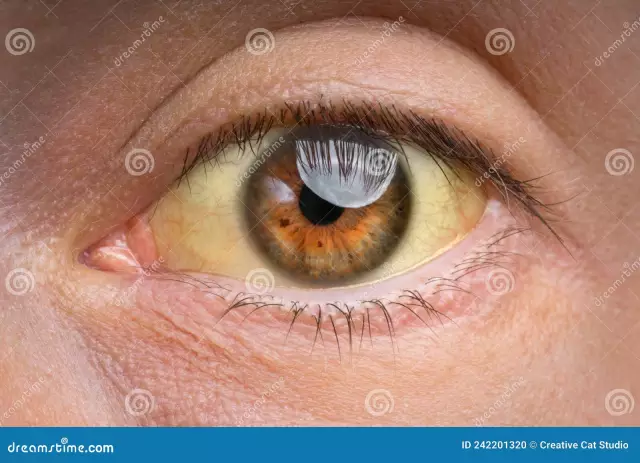- Author Curtis Blomfield [email protected].
- Public 2023-12-16 20:44.
- Last modified 2025-01-23 17:01.
Before starting a description of the pathology, it should be clarified: Botkin's disease (jaundice) - what kind of hepatitis? Doctors classify it as type A. This condition is common everywhere. The disease is distributed unevenly across countries and continents or within one state.

Causes of infection
Sources of infection are carriers of all forms of acute infectious processes. The main epidemiological danger is presented by patients with asymptomatic and anicteric forms. In the second half of the incubation period, the release of the pathogen with feces begins. Viremia is short-lived. The maximum probability of infection is noted in the last ten days of the incubation period and during the preicteric period. After the manifestation of symptoms of pathology, the frequency of detection of the virus antigen in the feces decreases sharply. Jaundice (hepatitis A) is seasonal in development. The epidemiological risk is highest in autumn and winter.

As a rule, an increase in the incidence is observed from July to August, gradually reaching a maximum from October to November. In the first half of the coming yearthe incidence is on the decline.
How infection occurs
The causative agent of pathology is transmitted by fecal-oral, in some cases - by contact-household method. The virus enters the human body when they consume contaminated food and water. The infectious dose is on the order of 100-1000 particles. In practice, cases of parenteral infection are described. Most often this was noted during the transfusion of blood or its components. Children are quite susceptible to the virus. Jaundice (hepatitis A) is also very common in organized communities. After the illness, a persistent, long-lasting, and in some cases lifelong immunity is developed. Clinical forms of pathology form a more stable defense than asymptomatic ones.
Mechanism of disease progression
Jaundice (hepatitis A) of an acute course develops when affected by hepatotoxic factors or when infection enters the liver cells.

Pathogenesis is caused by the formation of an autoimmune reaction - the production of antibodies in the body to its own tissues. With these processes, inflammation, damage and destruction of hepatocytes, and disruption of the liver occur. The chronic course of the disease occurs when the acute condition is insufficiently cured or neglected. Often the disease progresses to cirrhosis.
Symptoms
Jaundice (hepatitis A) in mild form often occurs without any manifestations and in many cases is not diagnosed. The process can become chronic if it is not detected duringpreventive examinations. Pathology may be accompanied by skin itching, the appearance of red dots on the skin (petechiae), neurotic manifestations, bradycardia. In the chronic course, the disease has symptoms such as increased fatigue, weakness, sleep disturbances, mental lability, and headaches. In some cases, there is nausea, gag reflexes, an unpleasant taste in the mouth, stomach upset, constipation.
How to treat jaundice?
Therapy of acute conditions is carried out in stationary conditions. The patient, in addition to conservative treatment, is prescribed a special diet. In severe cases, the patient is transferred to bed rest. As treatment, detoxification infusions are used to help compensate for lost liver function. Therapy includes taking hepatoprotectors, which are prescribed by a doctor.






